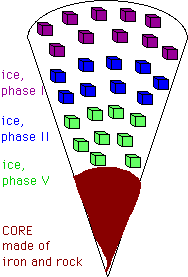This is a drawing showing the composition of the interior of Pluto.
Image from: NASA
What Pluto & Charon are made of
Pluto's
atmosphere is mostly made of Nitrogen. That makes Pluto's atmosphere just like the Earth's (except much thinner)!
Pluto's interior is mostly made of different kinds of ice. That makes Pluto like other icy moons.
Deep inside Pluto are to be found the core, which is made of heavier, rocky molecules.
You might also be interested in:
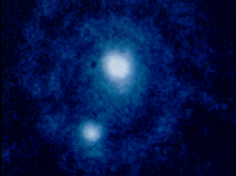
It may seem hard to believe that Pluto could have an atmosphere because it is so cold, but it does. Because there are times when Pluto is closer to the sun than is Neptune (making it the 8th planet for
...more
Minerals are the building blocks of rocks. There are many different types of minerals. All of them are solid and all are made of atoms of elements. Minerals can grow even though they are not alive. Most
...more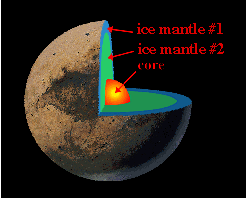
The diagram to the left shows what the inside of Pluto may look like. Pluto is mostly made of ice, with a small core of some rocky material buried inside. If the interior is warm enough, the inside of
...more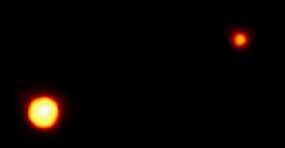
Charon is a moon of Pluto. Pluto has // Call the moon count function defined in the document head print_moon_count('pluto'); moons. Charon is much bigger than Pluto's other moons. James Christy discovered
...more
Of all the planets and moons in the solar system, Pluto and Charon are the two which are the most alike. They are almost the same size, and they are very close together. Pluto and Charon are so close
...more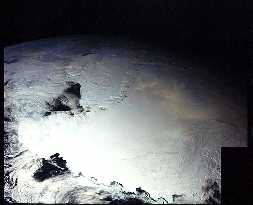
Pluto is so far away, and has never been explored. Questions to answer about Pluto include the following: What are the geologic features of the surface? (pictures of the surface) If there are bare spots,
...more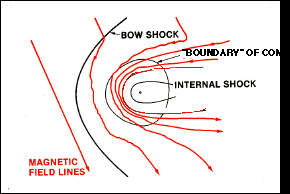
No one knows whether or not Pluto has a magnetosphere. Scientists were very surprised to find that Jupiter's icy moon Ganymede had a magnetosphere because it is hard to explain how an icy body can develop
...more
